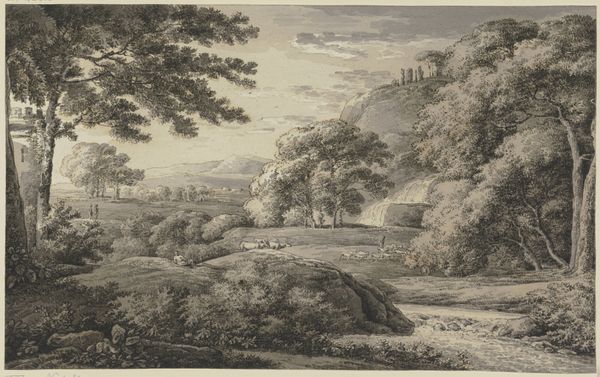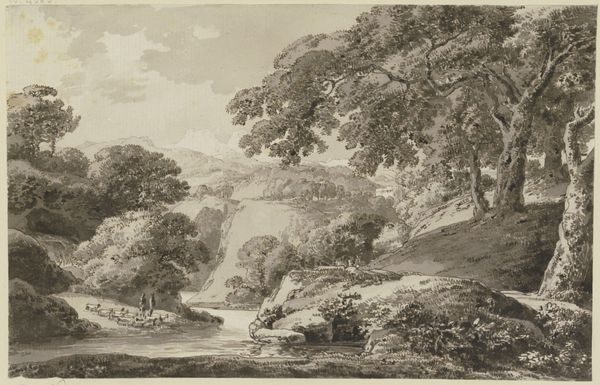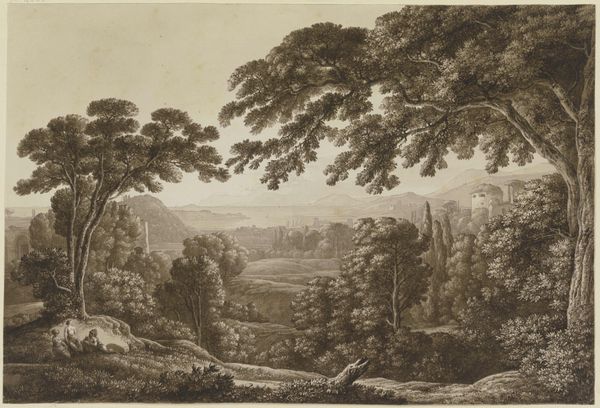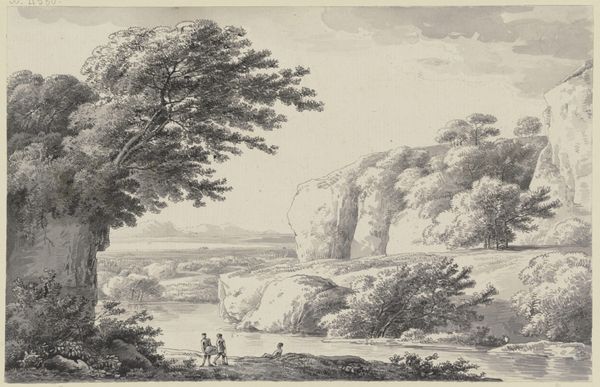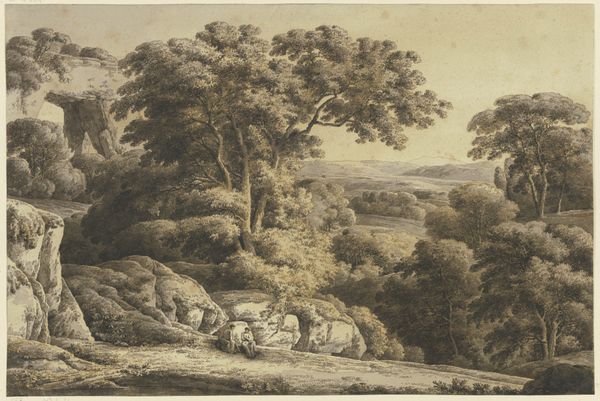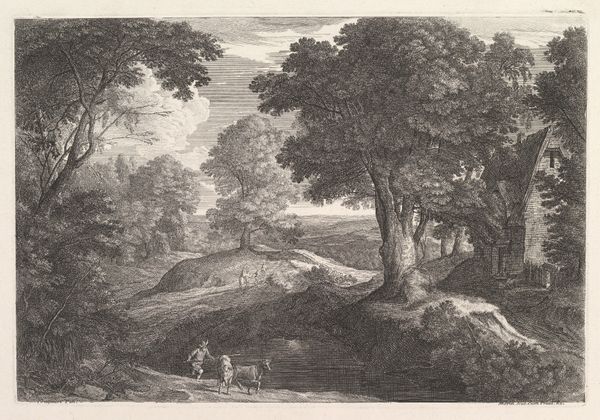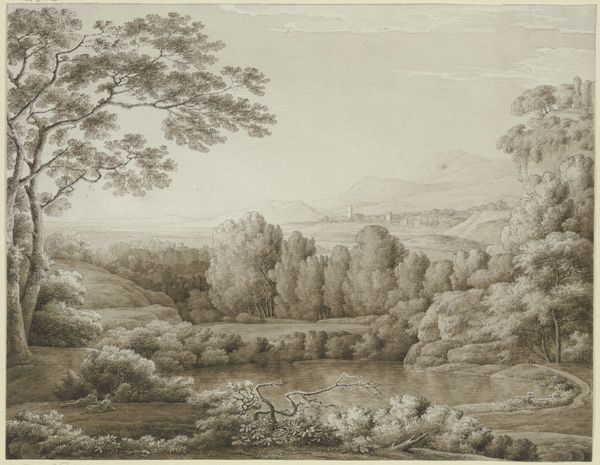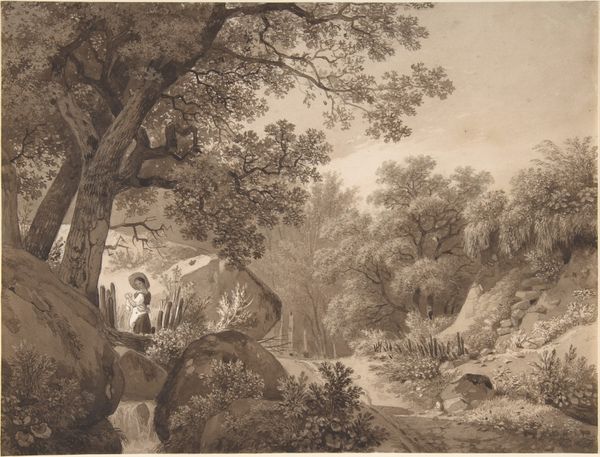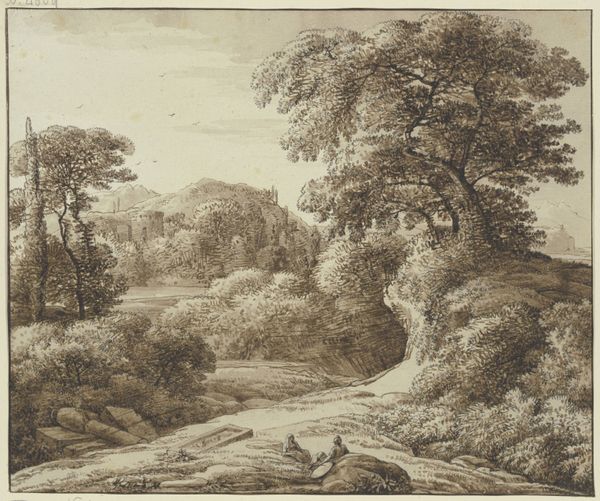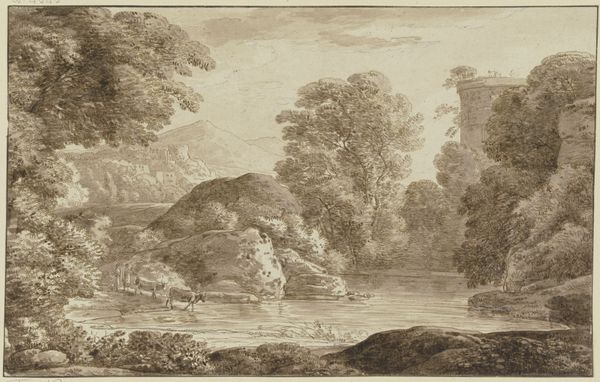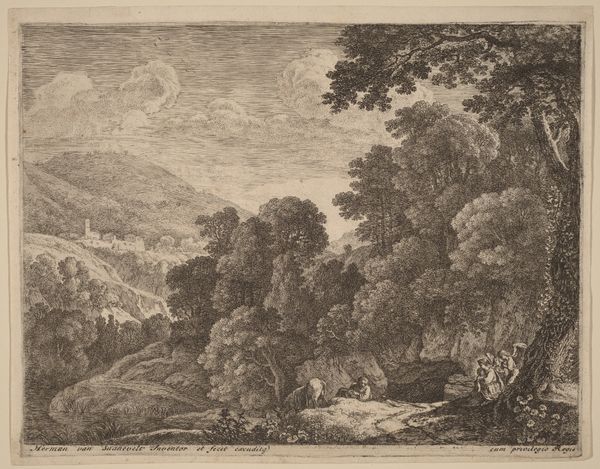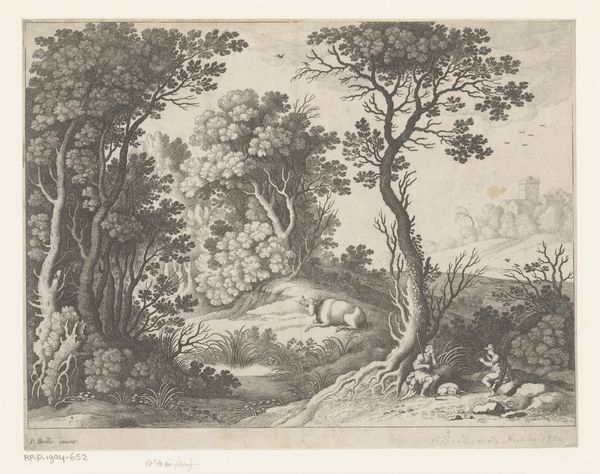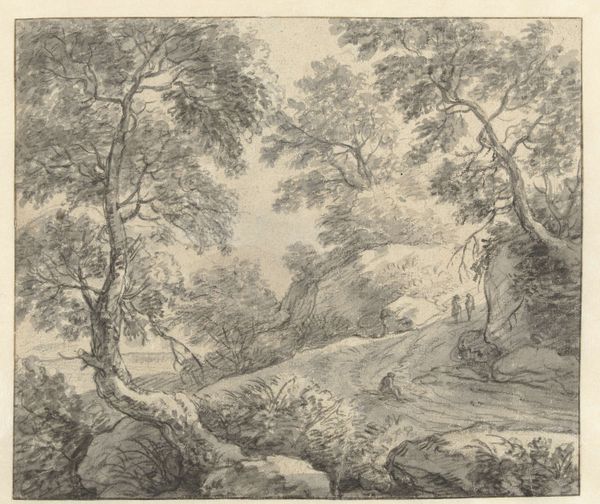
drawing, ink, pencil
#
pencil drawn
#
drawing
#
pencil sketch
#
landscape
#
charcoal drawing
#
ink
#
pencil drawing
#
romanticism
#
pencil
#
15_18th-century
Copyright: Public Domain
Curator: Before us we have "Baumreiche Landschaft mit Schafherde," or "Tree-rich Landscape with Flock of Sheep" by Franz Kobell. Editor: It's so serene. The graded washes of ink create a dreamy effect, and the composition, framing the distant hills with those large trees, draws me right in. Curator: Exactly! It's landscape in the romantic style. It attempts to express human-kind's humbled position in the grand scheme of nature. But let’s consider Kobell himself. He comes from a family of painters known for landscape and animals; an artist aristocracy almost! This scene fits neatly into the expectations for art patrons of the time. Editor: While understanding Kobell's lineage contextualizes this piece, let’s return to the drawing itself. Observe the precision! Each tree seems individualized with distinct canopies achieved through varied hatching and stippling. Notice how light falls selectively to create an organic sense of volume in the leaves. Curator: A sophisticated command of the medium, for sure, which facilitated popularity. These idyllic pastoral scenes served a social purpose. They evoked feelings about land and ownership amid changing socio-economic forces. Who commissioned it, and for what setting, reveals the painting’s ideological underpinnings. Editor: Perhaps. But I still read a universal appeal. Consider the winding stream guiding your gaze, this gentle movement. The details—the tiny figures resting by the water's edge. All of this leads towards a vanishing point on the horizon creating spatial harmony, and conveying an unmediated experience of the landscape. Curator: But who is granted this "unmediated experience?" This romantic framing naturalizes existing social relations. How are notions of class and landownership subtly encoded through such imagery? That is what speaks to me. Editor: It is intriguing how divergent analyses can be equally illuminating. Both contextual history and formal qualities shape our aesthetic and social experiences when contemplating artwork. Curator: Agreed. It is through these multiple perspectives that we can gain a more complex understanding of works from the past.
Comments
No comments
Be the first to comment and join the conversation on the ultimate creative platform.
